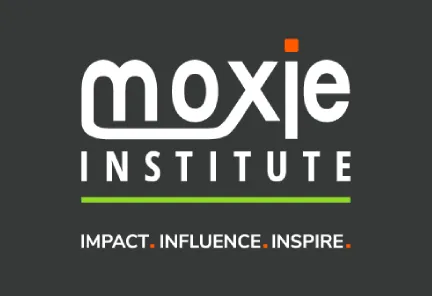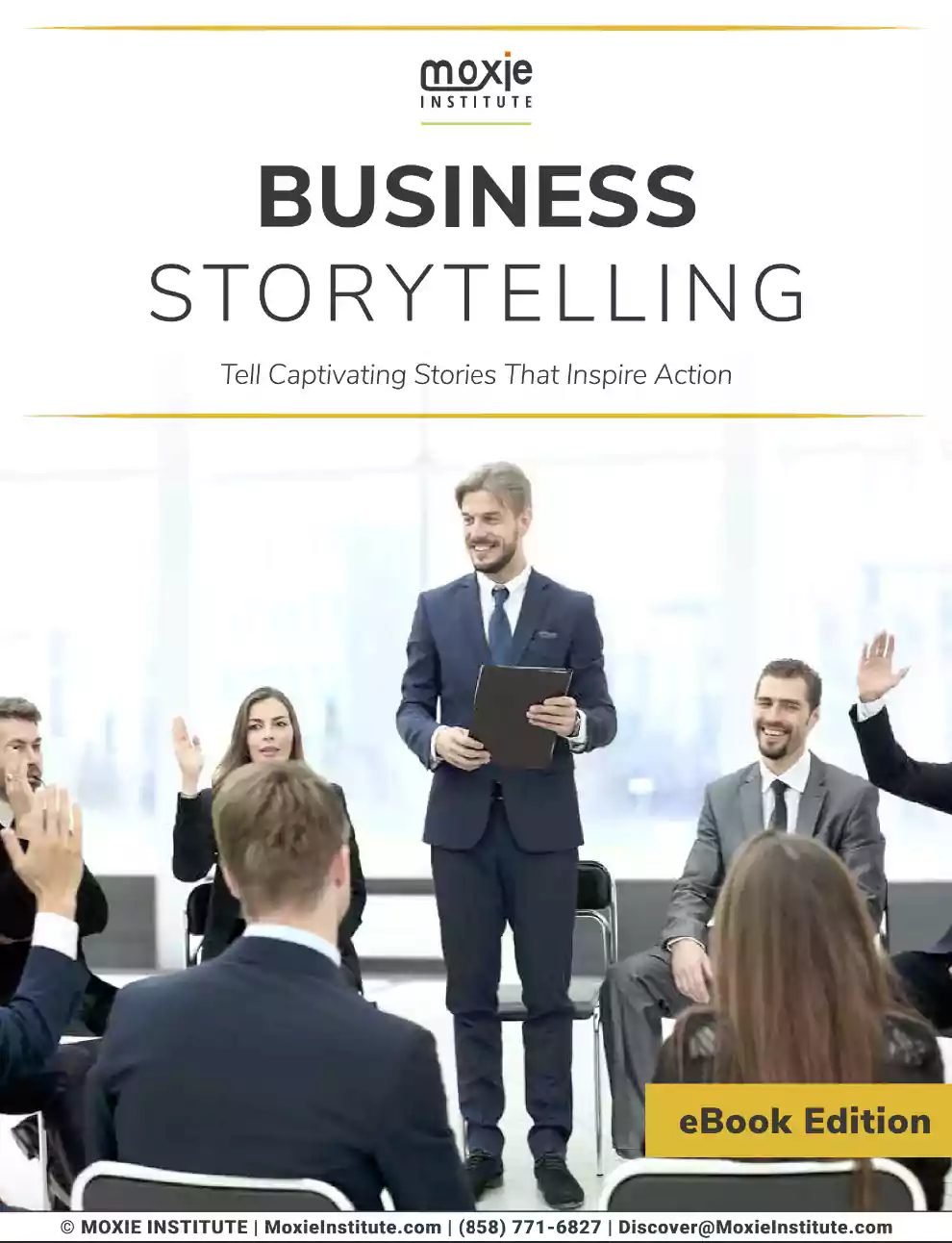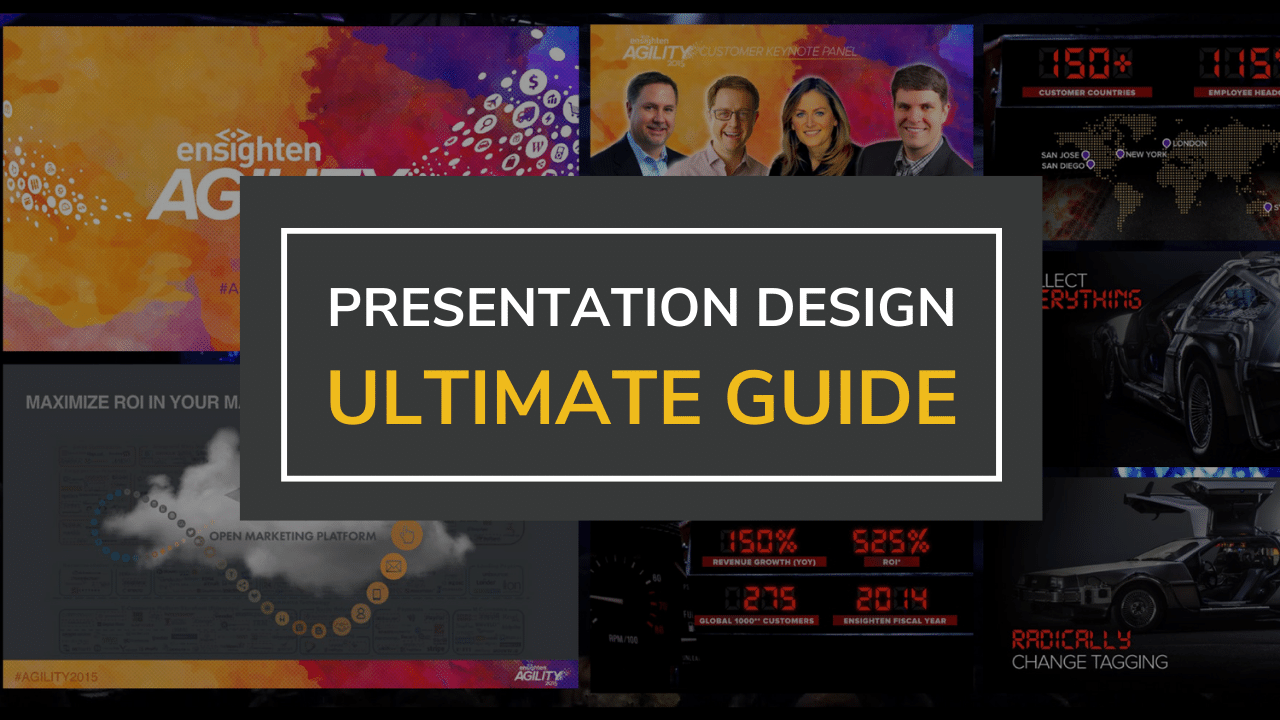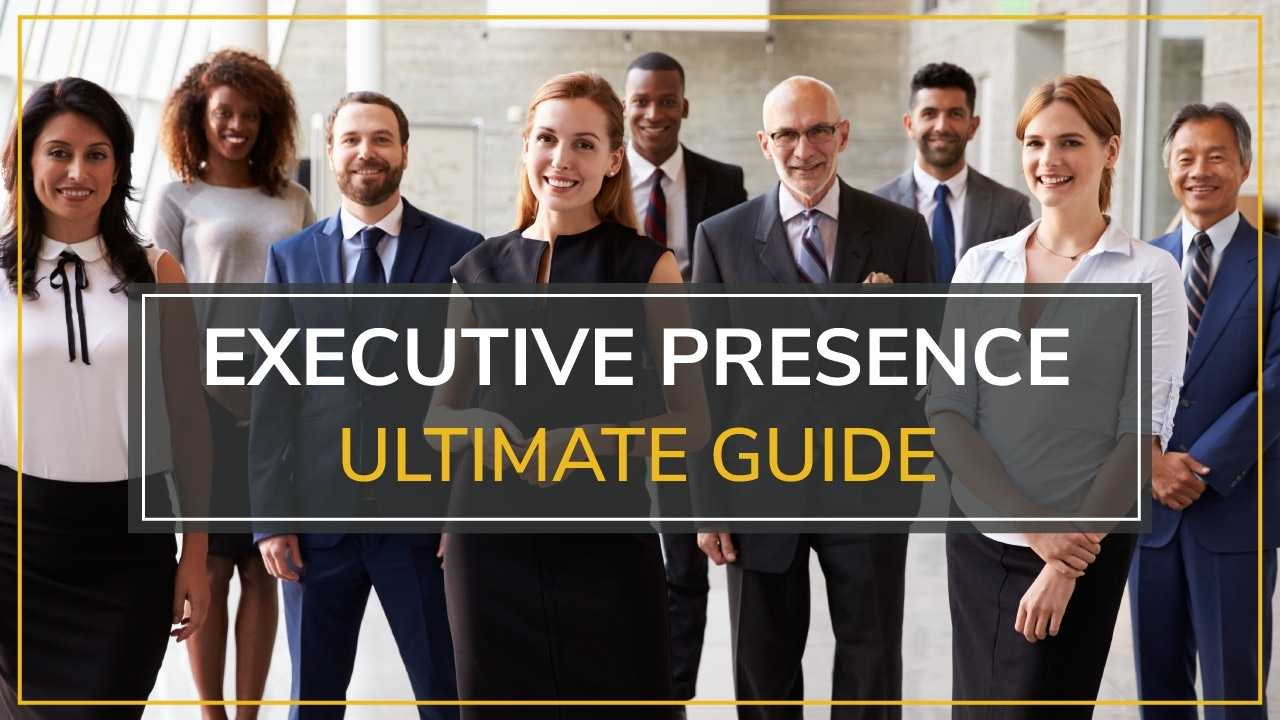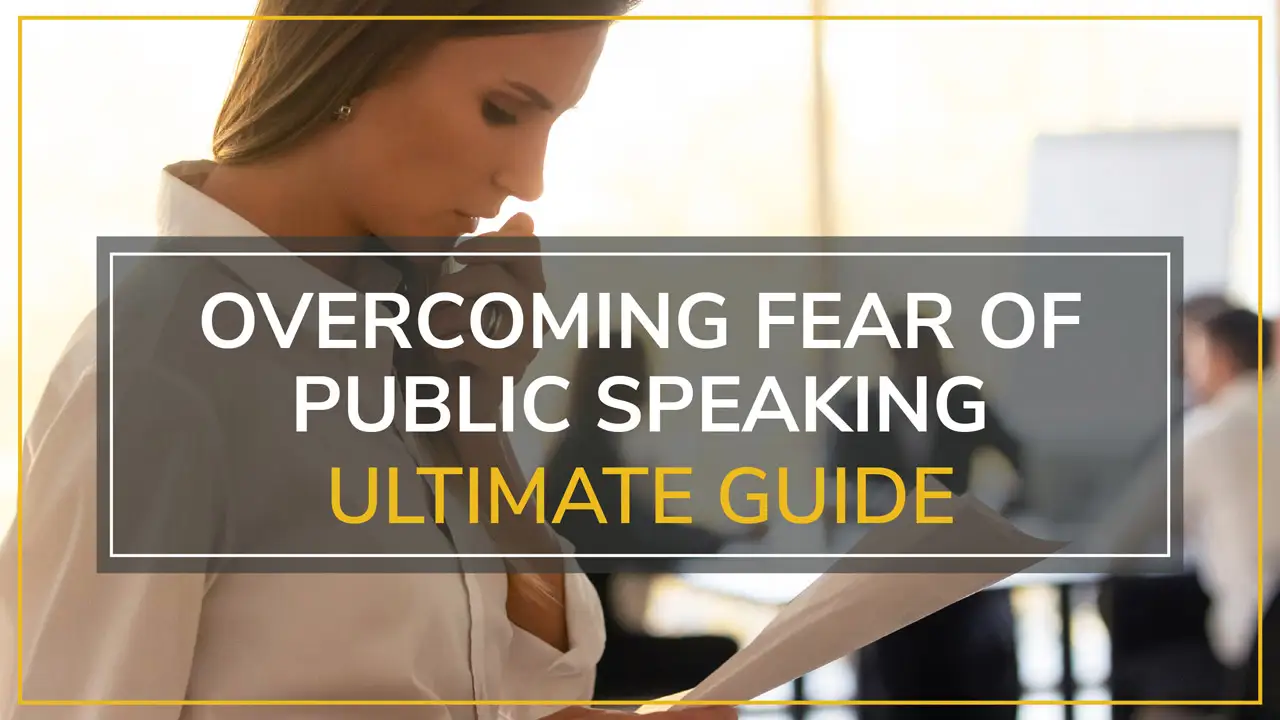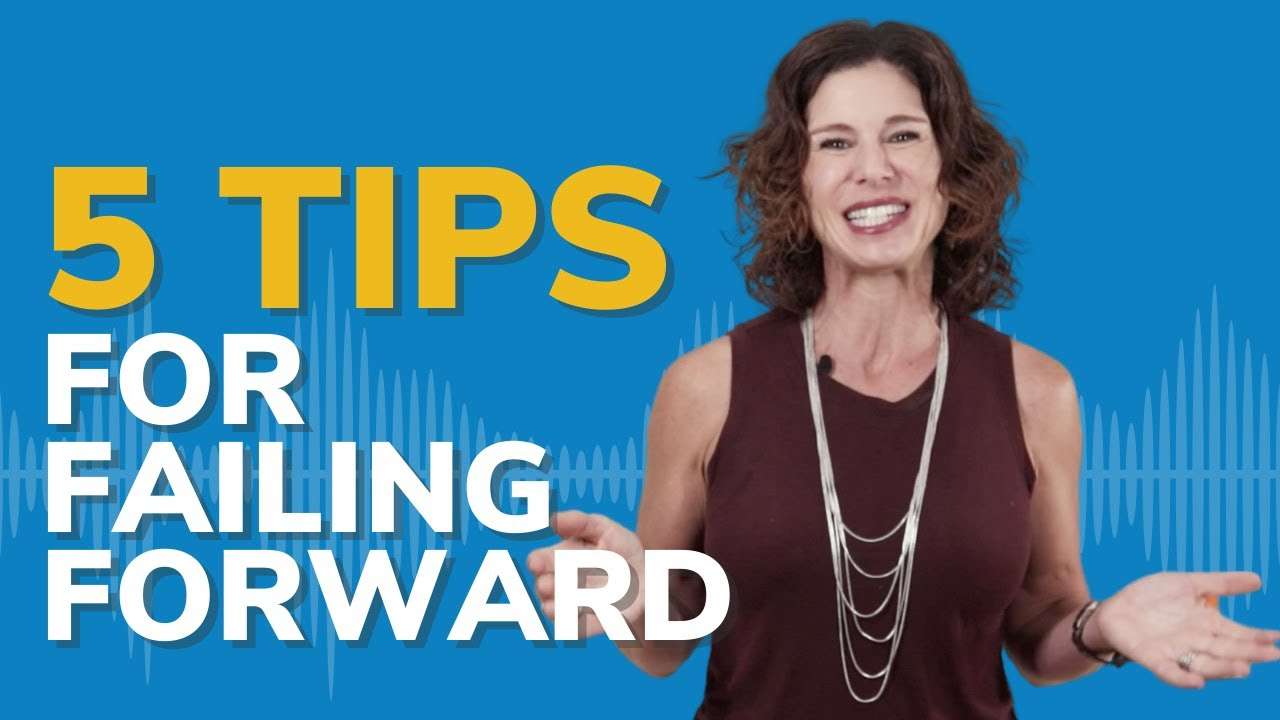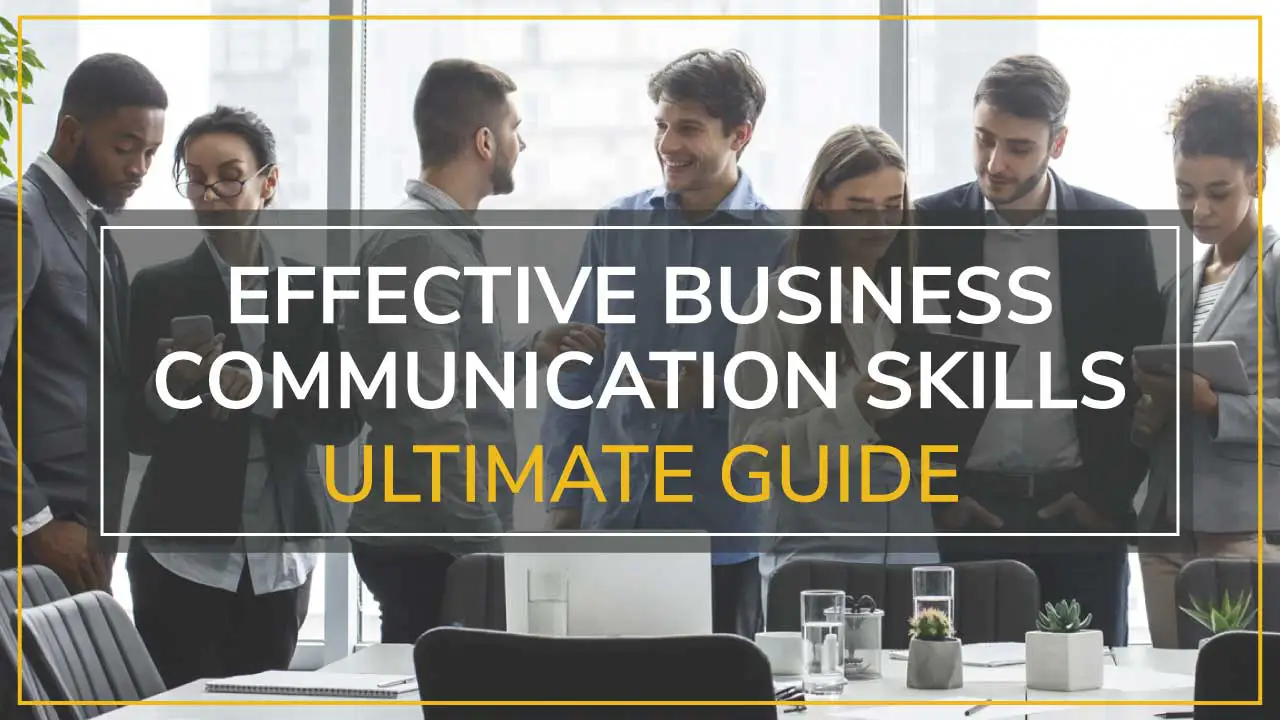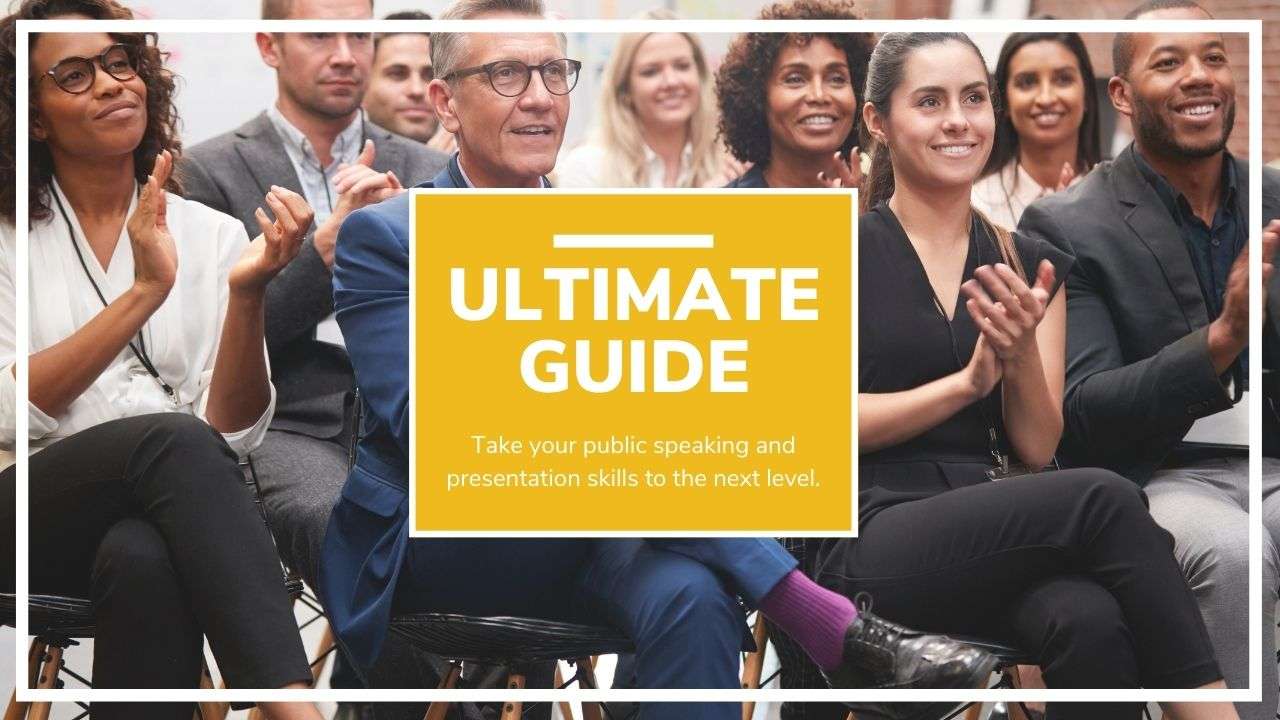If you can picture standing in front of a crowded boardroom after you felt you gave a solid presentation, only to hear papers shuffling and see execs pulling out their phones, then you understand exactly the type of situation we are trying to avoid. Your meticulously prepared content fades off into the cacophony of everything but another worthless meeting. Sound familiar?
It’s the pause-worthy moment that separates the good presentations from the amazing ones: how to conclude a presentation with a story that people remember long after you’ve taken a bow. At Moxie Institute, we’ve found that the most powerful leaders don’t simply conclude their talks—they end them the right way: In a way that reaches into the emotional heart of their audiences by leveraging the strategic power of a well-told narrative.
Coaching thousands of Fortune 500 execs, and analyzing the difference between an unforgettable presentation and a routine one, we’ve found a striking pattern: the most successful presenters—whether they’re badass or not—leverage the neuroscience of storytelling to craft conclusions that move people to action, cultivate change, and prompt audiences to beg for more.
In this detailed guide, you’ll learn how to transition your endings from throwaway musings to transformative endings that help you connect with your audience. We’ll pass along the evidence-based models that our clients have to thank for millions in funding, for leading both organizational and personal transformations, and for wowing boardrooms and TED stages alike.
The Power of Storytelling in Presentation Conclusions
Are you ready to schedule a strategy call to find out how we can help you and your team improve performance, leadership, and success? Let’s start by unpacking why story conclusions have such a level of influence.
Humans are hardwired for story. From early campfires to corporate boardrooms, from ancient religious texts to modern-day magazines and training courses, stories have been our most engrossing method of sharing knowledge, values, and dreams of the future. Once you learn how to end a presentation with an inspiring, captivating story you’re tapping into millions of years of evolution that have made humans remember stories far more than they’ll ever remember data.
Through our work with leading Fortune 500 executives, we have found that speakers who finish their presentation with a story have a 65% better retention rate than those who end with a traditional summary slide. It’s no accident—that is, it’s not coincidence, but rather cognitive science at work.
Studies from Stanford University’s Graduate School of Business have shown that stories engage certain parts of our mind and multiple areas of the brain at once, creating a phenomenon that neuroscientists call “neural coupling” between speaker and listener. When you finish with storytelling, you are literally syncing brain waves with your audience, making your message exponentially more memorable and persuasive.
The Recency Effect in Action
This is because of a psychological concept called the recency effect, which makes your conclusion the most memorable part of your whole presentation. Recent research in cognitive psychology indicates that humans remember the final 10% of any given experience much more clearly than the middle 90%.
That is a unique opportunity. When you learn how to end a presentation with a story, you are occupying the brain’s most valuable real estate—the moment when attention and encoding into long-term memory is highest.
Expert Insight: From our experience in creating high-stakes presentations, we’ve found that executives who close with a story-driven conclusion are 3 times more likely to set follow-up meetings and 45% more likely to achieve their target outcomes than those who close with traditional wrap-ups.
Why Most Presentation Endings Fall Flat
The problem is that while storytelling conclusions have this kind of power, most business presentations don’t end with a bang. Wading through thousands of corporate presentations in a variety of industries, we’ve discovered the key mistakes that sap conclusions of their impact.
The Science Behind Memorable Conclusions
Research from Harvard Medical School shows that the process of memory consolidation in our brain is most active during transitions—particularly during the moments on either side of a shift to a new task. Your conclusion is not just your final word, but the moment that the decision-makers in your audience’s brains use to (consciously or not) determine whether your insights are important enough to be filed away for future use or the virtual trash heap.
When you end a presentation with slides that feature bullet points, generic thank-yous or Q&A slides you are only stimulating the analytical part of the brain. Stories do, however, activate the limbic system—our emotional command center—creating an environment conducive to long-lasting behavioral change.
After years working with clients in 100+ industries, we continually see storytelling for business presentations lead to quantifiably different results. Stories elicit the release of oxytocin (the trust hormone), dopamine (the brain’s personal trainer), and cortisol (the chemical that helps memories gel under the right amount of stress).
Common Conclusion Mistakes That Kill Impact
The Data Dump Disaster Many speakers think that by filling their audience with final stats they will really drill their point home. Instead, data-rich conclusions trigger cognitive overload, which means that your listeners will mentally check out just when you most want them to be engaged.
The Apologetic Ending Comments such as “I hope this was helpful” or “Sorry I’m a little over time” convey a lack of confidence and diminish all the great work you’ve done building your point of view through the course of your presentation. Confidence is contagious—and so is doubt.
The Abrupt Stop The presenter who concludes abruptly with “Any questions?” burns the psychological momentum they’ve built. Presentations that don’t have an ending feel unfinished and unsatisfying, for the audience and probably for you, too.
The Generic Call-to-Action Saying “Let’s work together” or “Contact me for more information” does not give people a reason to act. Most CTAs don’t work because they don’t offer the reader a compelling reason to do anything other than remain in their current emotional state.
Quick Implementation Tactic: Record yourself ending your presentation. Listen for energy level, how it resonates emotionally and how clear they feel about the next steps. If you sound as if you are reading off a shopping list, it’s time to implement some storytelling strategies.
Transform your presentation skills with our presentation training programs designed for maximum impact.
The Neuroscience of Story-Driven Endings
If you know the neuroscience of storytelling conclusions then you are at a huge competitive advantage to create presentations that last. At Moxie Institute, we apply the latest advances in our field of neuroscience to guide what actually sticks in audience minds so you can deliver significant impact.
How Stories Create Lasting Neural Pathways
By telling a story when wrapping up your talk, several brain networks are working at once. Princeton University researchers have found that good storytelling causes the brains of a story’s characters and listeners to act in sync—what researchers call “neural coupling” between storyteller and listener.
And this synchrony not only deepens our understanding, it generates shared experience. Your audience isn’t just hearing your story when you reach your conclusion—they’re experiencing it with you, making memories that feel intimate and powerful.
Business presentations would never be the same again. Our business storytelling programs also teach executives and managers this technique, and they share that after they use these stories in meetings, weeks and months after their formal presentation, decision makers reference the stories, leaving their proposals top-of-mind with these stakeholders.
The Psychology of Emotional Closure
Stories do something data and bullet points alone cannot: They provide emotional closure. The human brain hungers for narrative closure—we’re psychologically hardwired to track storylines from start to finish. When you finish with a story, you meet that deep, fundamental cognitive craving—and you do so at the same time you’re imparting your take-home message.
According to a study in Current Directions in Psychological Science, processing the ending of a narrative sends reward signals to the brain, pairing the tale’s content with the storyteller. This neurological response explains why story-based presentations yield better approval ratings and increased likelihood of follow-through.
Pro Strategy: In our work coaching C-suite executives, we’ve found that the strongest neural coupling effects come from conclusions that merge personal transformation stories with explicit business implications. The brain is hard-wired to respond to stories of human transformation—stories that can drive change in organizations.
Five Storytelling Frameworks for Powerful Conclusions

Based on our work with thousands of top-performing practitioners, here are five storytelling frameworks that have consistently generated memorable, action-commanding conclusions to presentations. These are not just general templates but structures based on research using particular psychological principles to get the best result.
The Circle Back Technique
The Circle Back technique generates cognitive satisfaction as you come back to points you made earlier in your talk but with new or more meaningful context. This structure harnesses the brain’s pattern-recognition systems and its love of symmetry to feel satisfyingly whole.
Structure:
- Refer to your introduction hook, story or question
- Demonstrate how the content of your presentation answers or resolves them
- Give us more meaning, a more general context
- Conclude with a call to action that is strong as nails
Example in Action: “I started off today asking if communication challenges were costing your team more than you thought. From this data and some of the frameworks and solutions that we have covered, the answer should have become clear—if it hasn’t already: bad communication is not just inefficient, it is also a competitive disadvantage that compounds day in and day out. But here’s what gives me hope…” [Keep going with transformation story]
In our work with clients in storytelling training, we’ve found that when people use the Circle Back technique, message retention increases by as much as 40% versus when they use a linear conclusion.
The Future Vision Story
This structure also takes your audience to an irresistible future where they have implemented your advice. The potential of the brain’s future-casting systems are activated strongly by vivid future scenes, making this approach well-suited to change management and strategic presentations.
Structure:
- Paint a vivid image of what success looks like in 12-18 months
- What are some sensory details I could add about the state of perfection?
- Tether the vision to action in the immediate term
- Create a sense of urgency around taking the leap
Pro Implementation Tip: The best Future Vision stories add surprising details that make the scenario seem actual rather than theoretical. Rather than claiming “Your profit will improve,” tell the exact scene in which the CEO sees quarterly numbers and knows the transformation was effective.
The Transformation Narrative
Human brains are programmed to focus on change stories—which is how we respond to relevant learning opportunities. Transformation narratives succeed by painting vivid pictures of real examples of good people changing for the better, so your recommended actions feel doable and promising.
Structure:
- Present a sympathetic figure or organization who has the same problems
- Describe the specific flash of decision or change
- Explain the trip and the most important stops along the way
- Share the end result and what you learned
- Let your audience relate to the story today
Practical Exercise – Try This Approach: Think about a client, colleague, or company that was able to institute the kind of strategies you recommend. Tell a 90-second story about a transformative moment and not about the whole trajectory. Try reading it and really feeling it—the truth will speak to you.
Advanced Implementation: Our data storytelling training is all about how to embed the conversation of change within the data you present—giving data a human face and making statistics come alive and stick.
Crafting Your Signature Story for Maximum Impact
The most powerful presenters we coach develop what we call signature stories—they are well-crafted stories that explain who you are and are easily adaptable for varied audiences, while still being emotionally resonant. These experiences become part of their professional brand, over time building recognition and trust.
Essential Elements of Compelling Conclusion Stories
Specificity Over Generality Nonspecific tales do not generate neural coupling. The passage that wraps up your presentation must contain something that gives an imaginative picture and emotional resonance to the scene. Instead of “A company had improved results,” describe “when Sarah, the VP of Operations, walked into the Monday morning meeting three months later and saw every department head nodding in agreement for the first time in two years…”
Emotional Stakes In every story that is worth telling, something must matter. In business, the stakes could be career progression, survival of the company, a competitive edge, or the dynamics of a project team. Without emotional consequence, stories are just tidy little anecdotes.
Unexpected Elements The brain is particularly sensitive when it encounters the unexpected. Great ending stories have twists or turns, counterintuitive lessons, or just mind-blowing results that open people’s eyes and become things to remember.
Clear Connection to Action Your story warrants a direct link to the action you’re hoping your audience will take. This relationship should be organic and inevitable, not contrived or manufactured.
Adapting Stories for Different Audiences
A single core story can have many forms for different audiences with emphasis on different areas of the story and language that the audience uses.
For Executive Audiences:
- Concentrate on strategic consequences and competitive advantages
- Talk metrics and ROI with the business side
- Focus on leadership choices and organizational consequences
- Refer to market positioning and shareholder value
For Technical Teams:
- Emphasize improvements in process and efficiency
- Include something about what you did in particular, including methodology and implementation details
- Concentrate on problem-solving and innovation elements
- Proper use of technical words
For Sales Organizations:
- Focus on the impact revenue and relationships have on the customer
- Include competitive gains and market growth
- Be persuasive and steer the results
- Link individual and team performance indicators
Pro Insight: In our work around executive presence training, we’ve learned that the most malleable stories are about human decisions and emotions, not technical procedures. Universal human experiences translate across all audience types while specific technical details may alienate some listeners.
Schedule a complimentary strategy call to discover how we can help you and your team enhance performance, leadership, and success through masterful storytelling.
Advanced Storytelling Techniques for High-Stakes Presentations

If you’re speaking to C-levels, investors, or even auditoriums full of people, common storytelling methods might not cut it. Through our cutting-edge methods, informed by performance psychology and performing arts practice, we enable presenters to make extraordinary impact in high-stakes situations.
Multi-Sensory Story Integration
The most effective conclusion stories engage us on multiple levels, forming richer neural networks and emotional attachments. This is one of the principles we use in our coaching based on Hollywood and Broadway methodologies.
Visual Integration: Describe instead of writing so readers can see what’s happening. Notice the detail of visual pictures, color names, and indication about place. “The conference room was a tense and divided space and then turned into a buzz of collaboration—I could see the way people leaned in, made eye contact, and began to build on each other’s ideas.”
Auditory Elements: Include sounds, voices, and audio cues within your stories. “When the CEO heard those numbers, there was silence for what felt like 10 days. Then she said, ‘This changes everything,’ in a voice I had never heard her use before—subdued, but firm.”
Kinesthetic Components: Mention physical sensation, movement, and spatial orientation. Those details are what allow an audience to feel present in your story. “As I observed the team executing on the new process, I could feel the room relax—shoulders fall, breath deepen, and for the first time in what felt like months, smiles were authentic in a staff meeting.”
Building Emotional Crescendos
Based on our mastery of performance psychology, we show clients how to build conclusion stories with purposeful emotional builds that resolve in powerful calls to action.
The Three-Act Structure:
- Setup (30% of story): Introduction of characters, setting, and conflict
- Confrontation (50% of the story): Introduce problems, obstacles, and difficult choices
- Resolution (20% of story): Layout of outcomes and connect to audience action
Pacing and Rhythm: Manipulate the emotional reactions of your audience by shifting the pace. Start moderate at the beginning, build up tension in the middle, and then whiplash into a triumph—or calm things down and let the profound realizations flood in.
Vocal Variety: The tone of your voice brings emotional content that supports the message of the story. Practice with volume, speed and tone changes to hit story emotional beats. Murmured moments can be as explosive as full-throated crescendos, if deployed strategically.
Advanced Technique: Record yourself telling your conclusion story with: 1) only facts 2) only feelings 3) a combination of both. The balanced edition seems to work best for business crowds.
Common Pitfalls and How to Avoid Them
Even seasoned speakers commit the same predictable errors when applying storytelling endings. After watching thousands of presentations, here are the most harmful mistakes and what to do about them.
Pitfall #1: The Never Ending Story Problem: Stories that go on and on are boring and detract from your message. Solution: 60-90 seconds tops for those “and in conclusion” stories. Work on it with a timer—do it over and over until you can tell the story in this time frame and still make people feel.
Pitfall #2: The Irrelevant Narrative Problem: It’s difficult for your listeners to see how information that isn’t related to your topical content is supposed to help them get something meaningful done. Solution: All parts of the story should support that one message. If a fact doesn’t advance your narrative or bolster your conclusion, cut it.
Pitfall #3: The Fabricated Experience Problem: People can smell out the lack of authenticity in stories, and that is a credibility and trust killer. Solution: Genuine experiences (your own or client/colleague stories with permission). If you need to construct composite situation stories, make clear that that’s what you are doing.
Pitfall #4: The Emotional Manipulation Problem: Stories that try to emotionally manipulate readers without providing real value fall flat with a more sophisticated audience. Solution: Make sure your stories are about what your audience wants, not only what you’re trying to sell. On top of its emotional impact, the story should also offer something in terms of insight, inspiration or practical wisdom.
Pitfall #5: The Poor Transition Problem: Sharply changing gears from your main content to your conclusion story jerks your audience out of the listening. Solution: Build transitional bridges using phrases such as “This is like…” or “I saw this principle when…” which are naturally drawn from your content into narrative.
Recovery Strategy: If partway through your story you notice it isn’t resonating, resort to this saving phrase: “The key insight here is…” and you can just go right to your main takeaway and the call to action. This makes it possible for you to extract value from stories that don’t catch on.
Master the art of seamless story integration through our presentation skills training programs.
Your Storytelling Implementation Blueprint
Change your conclusions for presentations with this step-by-step system we have created working with Fortune 500 executives and high-stakes presenters.
Phase 1: Story Development (Week 1)
Day 1-2: Story Mining
- Search your professional experiences for transformation moments
- Ask coworkers to recall change efforts that stand out
- Profile 3 to 5 possible story ideas that suit your common content themes
Day 3-4: Structure Selection
- From the list that follows, pick the best storytelling model for each story
- Compare some frameworks with your same story and try to see what creates stronger impact
- Create one story using the Circle Back technique as your foundation narrative
Day 5-7: Initial Crafting
- Write out your story in 150-200 words
- Incorporate details of sensations and feelings
- Say it out loud and time each version
- Polish it until you can tell it naturally in 60-90 seconds
Phase 2: Refinement and Adaptation (Week 2)
Day 1-3: Audience Customization
- Customize your story template for three audiences
- Adapt tone, focus, and even specifics but keep story arc
- Practice easing into your story from various presentation subjects
Day 4-5: Integration Testing
- Practice your entire speech including story ending
- Tape yourself and listen to the energy, flow and authentic nature of your statements
- Find and fix any rough edges of transition
Day 6-7: Backup Development
- Make a 30-second version for when you are too busy for the full thing
- Come up with alternate endings for contrasting audience reactions
- Practice being okay if the story does not land the way you want it to
Phase 3: Performance Optimization (Week 3)
Day 1-3: Delivery Enhancement
- Vary your tone of voice, your pace, and your physical presence
- You can experiment with different emotional highs and lows to find your optimal range
- Get used to trying to look at the right people in your audience as you speak
Day 4-5: Real-World Testing
- Bring your story to a close in low-risk presentations
- Collect opinions of trusted colleagues/spectators
- Make a note of which ones motivate the most action
Day 6-7: Advanced Integration
- Experiment with multisensory elements
- Practice combining story to call-to-action seamlessly
- Build confidence in your story: repeat, refine, repeat
Ongoing Mastery: Monthly Review
- Determine which stories elicit the most powerful audience reactions
- Build new stories around recent experiences
- Iterate on delivery through audience feedback
Pro Development Tip: Some of the most effective speakers that we coach develop story banks—about 5-7 stories that they can use for different occasions and audiences. This preparation comes in handy, because they can always choose the best story in reaction to the audience.
Take your storytelling to the next level with our business storytelling workshop designed for maximum impact.
Frequently Asked Questions
How do I choose the right story for my specific presentation topic?
The best conclusion stories are those that are on-theme with your presentation and that tie in with your audience and their beliefs and struggles. Begin by gaining clarity on what response or action you want to elicit, and choose stories that naturally lend themselves to those reactions.
Harvard Business Review research states that stories that resonate with audience hopes and fears evoke 2.5 times more emotional engagement than ordinary ones.
This is what, after working with clients in various industries, we find to be the most effective story selection model: First, start with your key message. Second, decide what you will need to feel to motivate your desired action. Third, select stories that show the same transformative or resulting change. Last, modify the story where you provide information and language that represent your own audience’s environment within their profession.
What’s the ideal length for a conclusion story in a business presentation?
After analyzing thousands of high-stakes presentations, the best conclusion stories are 60-90 seconds at natural speaking pace. This timing provides enough detail for emotional connection without any distractions or overpowering your core message.
According to cognitive psychology studies, attentiveness is highest at the beginning of the story, and for most business audiences the attentiveness drops after 2 minutes. But engaging stories hold people’s attention longer than raw explanations.
Practice telling your story while timing yourself and learn how to narrate it in 90 seconds. If your narrative requires more time, pick some moment of transformation and tell that story. The aim is a strong emotional connection, not exhaustive chronological coverage.
How can I make my conclusion story feel authentic without sharing overly personal information?
Authenticity isn’t about baring your soul—it’s about resonating with your own story and representing events accurately. The best business stories delve into professional experiences, client breakthroughs, or industry observations as long as they are respectful.
You can use the “professional persona” technique we teach in our executive training: Tell stories where you were a witness, a facilitator, or a professional role player instead of the personal hero transforming yourself. This protects authenticity while respecting professionalism.
If you relay stories from clients or others on your team, get permission and think about removing identifying details. Fabricated stories made up of components of several true stories can be very powerful, particularly if they are shared appropriately. The trick is maintaining the emotional truth of something even when details are changed to fit the sensibilities or tastes of an audience.
What should I do if my story doesn’t seem to resonate with the audience?
Good presenters know the variability of story reception and plan accordingly but are ready with several options for endings and recovery strategies. If you feel like your narrative isn’t coming together, deploy bridge phrases such as “The important point here is…” and go straight into the main thing you want people to remember and do.
Studies in social psychology have revealed that the confidence with which a story is told is more important in the reception of the story than the polish with which it is recounted. Show professionalism in keeping the main situation intact, as well as when reacting to an adjustment.
Get into the habit of constructing shortened versions and alternative endings to your stories so you can pivot easily when necessary. If the audience is short on energy or time, sometimes a short, punchy story achieves more impact than a full one. The objective is to deliver what your audience wants—not to flawlessly execute your preconceived story.
How do I transition smoothly from data-heavy content to a conclusion story?
Good transitions recognize that the move from analyzing to storytelling is underway, and they work to harmonize a narrative arc. Use bridge phrases that make it clear why your data matters to humans: “These numbers tell us something important, but let me show you what this means for real people…” and “Behind these numbers is a narrative that shows why it matters…”
The secret is having your narrative be proof of your data, not as content distinct from your visuals. Present the story as an example, verification, or application of your analytical results. This method can fulfill logical and emotional processing requirements.
In our data storytelling training, we teach the “zoom in” technique: start with the larger data context and then focus on one specific example that tells a story with numbers. This actually gives you a nice flow while also offering time for both information and emotion to sink in.
Can I use the same conclusion story for multiple presentations to different audiences?
A good core story can be customized for different audiences by changing what is emphasized, what language is used, which details are discussed, and so on—as long as you preserve the core storyline. In fact, doing this will ultimately improve your delivery as you repeat and refine the process.
But successful adjustment requires understanding each audience’s needs, obstacles, and ways of communicating. At its emotional core, the story remains the same, but surface details should be tailored to be as widely relevant and impactful as possible.
Have three versions of your signature story: One for executive audiences highlighting strategic considerations, another for your technical teams about implementation details, and a third for broader business audiences with a mix of both. With this training, you can choose the version that best serves the situation at the moment.
How do I handle Q&A sessions after a storytelling conclusion?
Think of Q&A as a part of your conclusion and not an independent section. After your story and call to action, move with sentences like “I’d love to hear how these work in your specific situation” or “What questions do you have around implementing these strategies?”
This frame keeps the energy and focus created by your conclusion while adding some further discussion. Where questions do emerge which are related to the themes of your story, you could simply reference your story in passing, to reiterate key points. For instance: “That is the exact challenge Sarah had in the story I just told, and this is what they did to solve that…”
Always bring things back to your main message and call to action so your conclusion story is the last thing left in the room instead of some random question. Something as straightforward as “This conversation makes me feel more confident about why I believe…” gives you space to open and close with your key story and next steps.
What’s the difference between how to conclude a presentation with storytelling versus other presentation ending techniques?
Traditional ending formats such as summary slides, bullet-pointed takeaways, or bland calls to action largely engage the left-brain analytics. Story-type conclusions tap into emotion processing areas of the brain that lead to better memory consolidation and motivational responses.
According to neuroscience studies published by the American Psychological Association, the impact of creating an emotional connection through a story dramatically increases information retention by up to 40% compared to purely logical presentations. Stories give us context, meaning and emotional resonance that take abstract ideas and make them personal.
Unlike traditional endings that often feel obligatory or forced, story-driven endings build suspense and provide resolution. Reader expectations work in a similar way, and audiences appreciate closure, so story-driven endings can strike readers as natural rather than abrupt or forced.
But the best way to get people to take action often involves at least some of each: storytelling is how you hook people in by getting their hearts engaged, and clarity of what to do next is what leads them toward the finish line by engaging their heads. This mixture meets the emotional need and the logical processing demand, which may in turn maximize action-oriented responses.
TAKE THE FIRST STEP TO MASTER POWERFUL NEW SKILLS
Schedule an easy 30-minute call using our using our calendar. We’re here to help!
